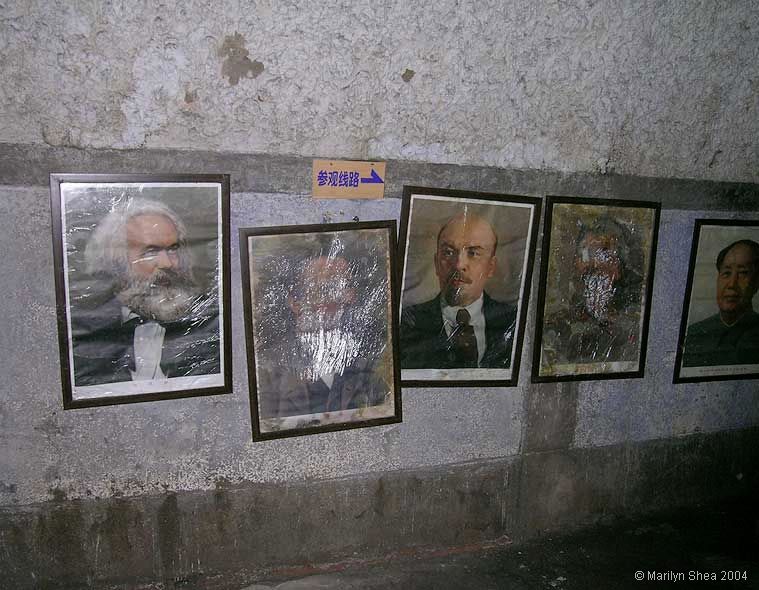 |
| To understand the Underground City, it is necessary to review some history. The People's Republic of China was founded October 1, 1949. The Soviet Union recognized it on October 2nd. While that may make it look like there was a clear-cut relationship between the two countries, the truth is much muddier.
From the beginning of the Chinese Communist Party (CCP), the Soviets were long on advice and short of actual material support. The Soviets in the 1920s were consolidating their own government and facing shortages of everything. Communism was to be an international movement, and the Russians saw themselves as the guardians of Marxism and the undisputed leaders within the movement. For the idealists of the 1920s the Russian Revolution was a miracle and a hope at the same time. From the Russian point of view, the Communist movement in China was a side issue. At times they seemed to support it, at others, Stalin supported the Guomindang, the Nationalist government which was in power. For the Soviets, having a protective buffer in the form of an ally in the east was an important component of their defense strategy, and if that was the Guomindang, so be it. The invasion of Manchuria in 1931 by the Japanese was a very real threat to Moscow from the east. At the same time, ideologically they supported the growth of international Communism. They provided the fledgling Communist Party with organizational and political advisors. They sent directives from Moscow to guide the Chinese civil war, and then later, the resistance against Japan. |
http://hua.umf.maine.edu/China/beijing2.html
Last
update: August 2009
© Marilyn Shea, 2009